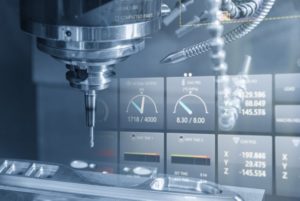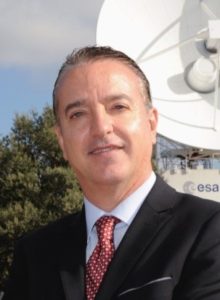The aerospace industry has constantly evolved hand in hand with technological developments, allowing it to improve its competitiveness and research capacity, while acting as a driving force for progress in other disciplines. The great deal of growth and investment in R&D is leading to the emergence of digital capabilities in fields such as materials composition, fuels, communications and security, whose implementation and adaptation to space projects will have a major impact in the coming years.
With an annual investment of 19.5 billion dollars in innovation, according to a recent study by Aviation Week Network and KPMG, the space sector is at the forefront of many technological fields, acting as a “natural generator” of discoveries and important advances, according to Dr. Javier Ventura-Traveset, director of the Scientific Office of Satellite Navigation Galileo and spokesman for the European Space Agency (ESA) in Spain.
At the international level, NASA is still the agency that is investing the most money in the sector, while Europe is the second largest in terms of total contribution, “a contribution that has increased significantly at the last ministerial meeting of ESA member countries,” Ventura-Traveset pointed out. In addition, Russia, Japan and India are also increasing their investment in space programs and technologies, and especially China, which currently considers the space sector a technology priority, “It, therefore, no coincidence that in 2018, for the first time in history, China launched more rockets than any other country in the world, and the same thing happened in 2019 and will happen again in 2020,” the expert said.
In any case, international collaboration in technological developments is intrinsic to the aerospace industry. “Cooperation between space agencies around the world is also very common, and I would say even mandatory when we want to carry out really ambitious scientific or exploration missions. In the case of the European Space Agency, international collaboration is part of our DNA, with 22 member countries and cooperation with all the world’ space agencies,” the director of the Galileo Science Office said. In this regard, he offered the example of the James Webb Space Telescope, the successor to the Hubble Space Telescope, which is due to be launched next year.
Technology trends
Ventura-Traveset discussed several of the most avant-garde essential technologies currently in development:
– Technologies related to propulsion and aerodynamics in rockets and satellites. Competitive alternatives to current engines are being investigated, such as electrically powered propulsion devices based on plasma generation for satellites and the development of reusable engines for launchers.
– Life support and protection systems associated with exploration missions. These state-of-the-art systems are being developed for space, including the use of evaporative cooling to maintain appropriate temperatures in space suits.
– Highly complex scientific sensors and instruments for science and Earth observation missions, with higher resolution and sensitivity.
– Navigation and satellite communications technologies. Innovations are leading to new solutions and services, such as high-capacity geostationary satellites, satellites with greater flexibility on board for dynamic resource allocation, nanosatellite constellations that provide connectivity services to the Internet of Things, and large constellations of broadband satellites.
– Materials science. New high-performance metallic and non-metallic materials are being developed for the requirements of future products, such as advanced lightweight alloys, high-temperature materials, coatings, multifunctional composites, materials for new processes such as additive manufacturing, 3D printing, etc.

Innovations in the aerospace industry include miniaturization of components, electric propulsion of satellites and the development of increasingly accurate scientific sensors
– Highly advanced methodology to manage complex programs and systems. Aerospace engineering is innovating in terms of models to improve the planning, documentation and safety processes of designs, programs and components of aerospace projects with multidisciplinary teams.
Some of these technological trends are giving rise to specific achievements, such as a high level of miniaturization in components; the inclusion of transversal technology in the space field, such as artificial intelligence, the processing of large volumes of data (big data), and the possibilities of quantum technology in the field of communications and security; and the use of technologies to convert indigenous lunar matter into resources to sustain human space exploration.
Chart: Aerospace Industry 4.0 Applications (available only in Spanish)

Source: Exponential technologies in manufacturing. Michelle Drew Rodriguez et al. Deloitte, 2018
Security, a priority
Precisely one of the essential and intrinsic aspects of technological innovations in the aerospace industry is related to safety: “It is easy to understand, for instance, the need we have to define strict safety measures in fields such as rocket launching, manned spacecraft and the protection of our astronauts, life support systems on board the international space station, etc.,” said the spokesman for ESA in Spain.
Its scope of influence is greater, as it is also essential in the provision of essential services for Europe such as the EGNOS navigation service for civil aviation, the Galileo navigation system applicable to all sectors of the economy, communications satellites and security in the provision of earth observation data. It is also of vital importance in terms of the problem caused by space debris, the risks of collisions in orbit, and the risks associated with the effects of solar storms on satellites or astronauts. “At ESA, we are working on multiple technologies to mitigate these security issues,” he said.
However, as the expert pointed out, the space sector requires operation in extreme conditions: “Our satellites must work in high vacuum conditions with enormous radiation, large temperature gradients, etc.” All this implies, for instance, that the electronics on board are highly reliable or that the components weigh as little as possible, minimizing the cost associated with putting them into orbit. Even so, during mission launch, satellites are exposed to high levels of noise, vibration and acceleration, which can cause corrosion or the breakage of components. Once in orbit, satellites will also be exposed to extreme conditions, such as abrupt temperature changes that can induce thermal stress, vibrations, cracking, etc. The electronic components on board have to withstand high levels of radiation and ionization, and the impact of charged particles or UV radiation from the sun. “In-depth knowledge of the nature of materials and the development of advanced manufacturing processes are essential to minimize these vulnerabilities,” said the ESA chief, requiring them to carry out ongoing research and develop new technologies and materials. “Our missions cannot fail, as they cannot usually be repaired once in orbit. The challenge of reliability is thus inherent in all our programs,” Ventura-Traveset said.
Upcoming missions
As part of the technological objective of the industry, together with the lunar missions, ESA highlights that a robotic mission to collect Martian samples –the Mars Sample Return– will be carried out this very decade with collaboration from both NASA and the European Space Agency. This mission will be in addition to the recurring robotic and manned missions to the moon on. “We are going to go back to the lunar orbit and the surface with human beings and this time we are going to do it to stay, with a station in cislunar orbit, the Gateway Space Station, which will be the fruit of international collaboration, with a significant contribution from Europe,” the expert said.
The major scientific advances are focused on the possibilities of observation with gravitational waves and, in this field, the future ESA mission, LISA, may revolutionize our understanding of the universe in general; there are also other missions under way for the understanding of the dark universe, such as Euclid (ESA) slated for 2022; or the search for life outside the earth, through, for example, the analysis of exoplanets, “a field in which we can say with some pride that Europe is currently leading research worldwide with the CHEOPS, PLATO and Ariel missions.”
Environmental monitoring of the planet and monitoring of climate change are also top priorities today, with our continent leading the way, as it has the most ambitious Earth observation program in the world – the Copernicus Program. It is also working on missions that are capable of cleaning up space debris orbits, eliminating non-operational satellites, for instance. Additionally, work is under way to develop a system like GPS or Galileo in lunar orbit, a project in which Ventura-Traveset is immersed, to be able to carry out the first manned missions to Mars; the possibility of diverting near-Earth asteroids that could put our planet at risk; or the exploitation of lunar or asteroid resources. “All of this is shaping an exciting technological future for our industry,” the expert concluded.
Collaborator
 Javier Ventura-Traveset Bosch has a PhD in Telecommunications Engineering from the Polytechnic University of Turin (Italy), a Master’s degree in Telecommunications Engineering from the Polytechnic University of Catalonia, a Master’s of Science and Engineering from Princeton University (USA) and is a graduate of IESE’s Senior Management Program.
Javier Ventura-Traveset Bosch has a PhD in Telecommunications Engineering from the Polytechnic University of Turin (Italy), a Master’s degree in Telecommunications Engineering from the Polytechnic University of Catalonia, a Master’s of Science and Engineering from Princeton University (USA) and is a graduate of IESE’s Senior Management Program.
For more than 30 years he has been working at the European Space Agency (ESA), where he has been involved in many space programs: satellite communications, Earth observation, science, microgravity, technology transfer, and satellite navigation. An internationally recognized expert in the field of satellite navigation, he has been mission manager and system manager for all phases of the EGNOS Navigation project, the precursor to the European Galileo system. He has worked in the service of the Cabinet of the ESA Director General, having been Director of the ESA Communications and Education Office in Spain. He is currently executive secretary of the ESA’s Scientific Advisory Committee on the Galileo Program and head of ESA’s Scientific Office of Satellite Navigation. He coordinates the implementation of a navigation system for future lunar missions and is the ESA’s spokesman in Spain.
He is co-editor and co-author of the book EGNOS: The European Geostationary Navigation Overlay System, A Cornerstone of Galileo, and author or co-author of several book chapters, four patents and more than 200 articles in international conferences and journals in the field of space engineering. Dr. Ventura-Traveset is a member of the Royal Academy of Engineering of Spain.





